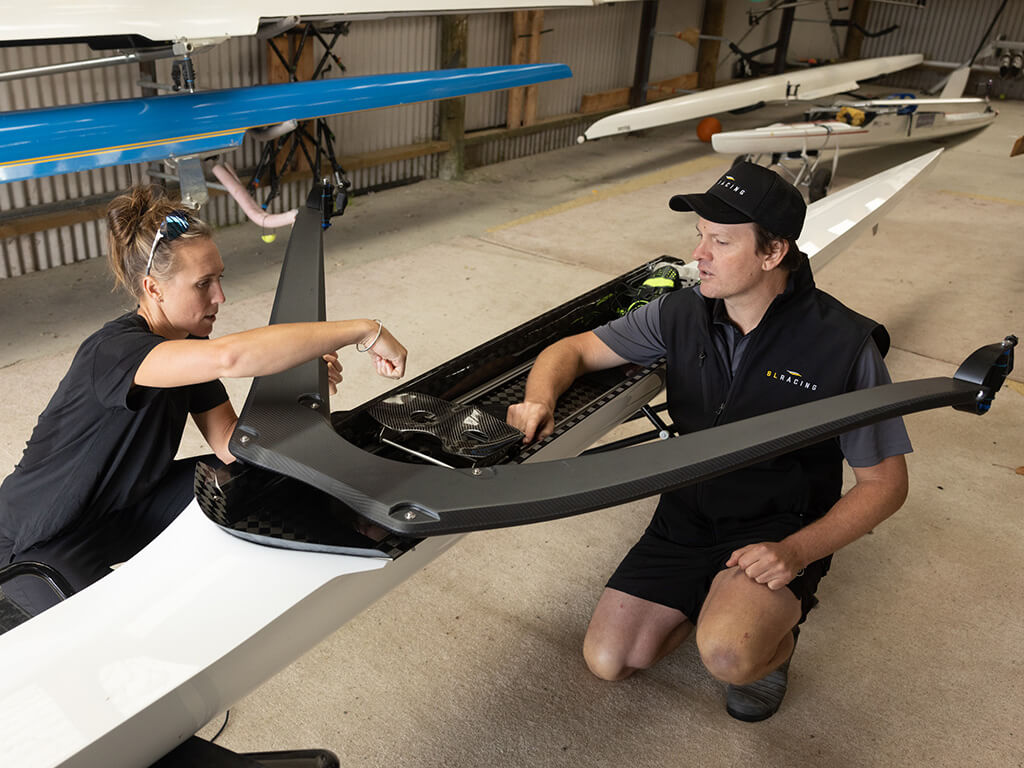In an earlier blog piece that was also included in Rowing NZ’s Oarsport magazine we started a look at the rowing boat in general. Below is the half of the article that didn’t fit on that page!
The feet & the seat:
We often overlook just how much impact the position of someone’s feet in the boat will have on their comfort and technique. Move your feet towards the stern or bow and you’ll give the rower an increased or decreased arc at the start of their stroke and vice versa at the end. At the extreme, that could mean feet near the stern with a punchy leg based rhythm, or feet to the bow with a more languid lay-back style. Again, it’s all about compromise. OUR QUICK TIP: If you are getting in a new boat for the first time and want everyone to set up together and feel comfortable, move your feet so that you are sitting in the finish position with a fist outside your chest on your outside hand for sweep oar…and for sculling a safe bet is about a fist gap between your handles.
There is also plenty to be said about seat and feet height, but we will cover that off in more detail later in the year!
The riggers:
This is where you’ll end up making a lot of your rigging changes. We’ll look into those changes in more detail next time around, but suffice it to say that changing the angle of your pin, the height of your gate, and the distance from you to the gate all have a big impact on your boat feel and exhaustion levels! The gate and your oar are like the cogs and chain on a bike and little changes can make a huge difference to what gear you are in. Keep your riggers clean and if you have a backstay…use it…we’ve definitely heard horror stories of backstays not being used and the whole structure of the boat being torn apart! A really simple handy hint is if your backstay is an adjustable length, make sure you loosen it off when rigging up a boat, then tighten it up last. Squeezing a tight backstay on might push your pitch out a few degrees and completely ruin your connection with the water.
The best of the rest:
Every boat will be a little bit different in the other pieces that make it up. The bow ball – that’s for safety purposes, so we don’t go skewering each other in an accident. The bow and stern deck – in the past that was literally covered with canvas, but now we use moulds to precision seal the ends of the boat in carbon and honey comb. Some of you will find drink holders to stop drink bottles slamming around the bottom of the boat. Others will have grip tape or rubber to help you place your feet without slipping out the side of the boat. All in all though, everything that goes into a rowing boat falls into one of two categories – comfort, or speed. Personally, we think the two go hand in hand, as a comfortable rower has the best chance of being a fast rower!
So next time you hop into your boat have a look around at all the bits that make it up and try to understand why they are there and what they do. If you understand your boat, you’ll inevitably figure out how to make it go faster and surge ahead when it counts.


